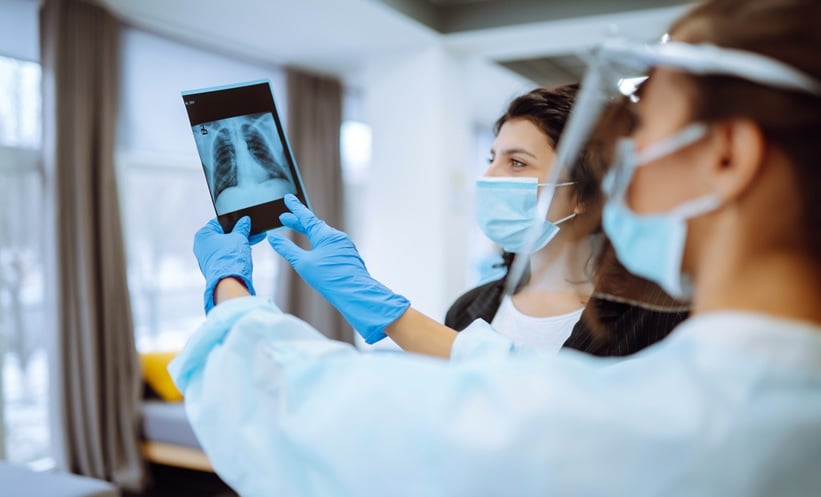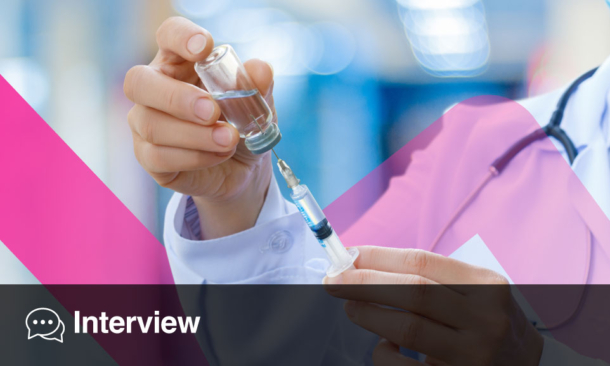Anne L. Wyllie | Department of Epidemiology and Microbial Diseases, Yale School of Public Health, New Haven, Connecticut, USA
Citation: EMJ Microbiol Infect Dis. 2023;4(1):59-64. DOI/10.33590/emjmicrobiolinfectdis/10305449. https://doi.org/10.33590/emjmicrobiolinfectdis/10305449.
![]()
After completing your BSc in Immunology and Microbiology and MSc in Cancer Immunology in Auckland, New Zealand, you moved to Utrecht, the Netherlands, to undertake a PhD on the surveillance of pneumococcal carriage in all ages. What or who influenced you to pursue this line of work?
While I selected the immunology and microbiology major during my biomedical sciences undergraduate degree, this was purely due to my interest in immunology, as I did not actually like microbiology at all. Through this, I became fascinated with cancer immunology and completed my masters in this, before moving overseas, first to London, UK, and then to Amsterdam, the Netherlands. Without career experience in the laboratory, I struggled to secure a research position. Fortunately, a former colleague connected me to the research group of Debby Bogaert and Krzysztof Trzciński at the University Medical Centre (UMC) Utrecht, and they thankfully gave me a chance. I very gratefully accepted the role of laboratory technician, despite it being microbiology-focused. Their supervision and research group was incredible though and I quickly found myself absolutely gripped by the work we were doing. My colleague and I would actually run down the corridors to eagerly share results with them as they came through. Our work broadly focused on the respiratory microbiome together with a particular focus on Streptococcus pneumoniae. This is where my work in salivary diagnostics started. Trzciński had been combing through literature from the early 1900s and noticed all the pneumococcal research involved use of saliva samples. We decided to revisit this sample type to investigate whether it could help to improve detection of pneumococcal carriage, particularly in older adults, and this formed the basis of my PhD thesis.
You have won several awards over the last 3 years, including the 2021 COVID-19 Research Award from Yale School of Public Health, New Haven, Connecticut, USA. Can you explain the research you performed that resulted in you receiving this award?
Having developed sensitive sampling and detection methods for using saliva to improve the detection of pneumococcus, when witnessing the numerous challenges arising from complete reliance on nasopharyngeal swabs at the start of the COVD-19 pandemic, I wondered whether saliva could prove useful in this setting. My colleagues at Yale were supportive of this idea and within a few weeks we had obtained a robust dataset showing saliva to perform at least as well as, and in many cases better than, the ‘gold standard’ nasopharyngeal swab. Recognising early on that there would be a need for frequent, repeat testing as communities re-opened and that nasopharyngeal swabs would not be ideal for that, we worked to further optimise saliva for severe respiratory syndrome coronavirus 2 (SARS-CoV-2) detection. A major driver in this was to increase access to testing, removing barriers from sample collection through to cost. This motivation led to the development of SalivaDirect™ (Yale School of Public Health, New Haven, Connecticut, USA), an RNA extraction-free PCR test we validated for use on numerous PCR instruments and with many different reagents. This allows labs to more quickly and easily implement it into their own settings, utilising their existing infrastructure and supply chains, and thereby supporting a lower cost testing option for patients.
You were also awarded the 2023 Young Investigator Award in Clinical Microbiology and Infectious Diseases at the European Congress of Clinical Microbiology and Infectious Diseases (ECCMID) for your work into testing saliva for COVID-19 detection. Can you summarise your research in this area and the outcomes.
I am incredibly honoured to have received the 2023 Young Investigator Award in Clinical Microbiology and Infectious Diseases, and the 33rd ECCMID Congress in Denmark will always be a memorable point in my career. This award was in recognition of the validation and optimisation of saliva as a reliable sample type for the detection of SARS-CoV-2, which led to the development of a low-cost, simplified, open-source PCR test to help increase access to testing during the COVID-19 pandemic. Importantly, we have continued to build upon this and have worked to expand this testing approach for the detection of other respiratory pathogens such as influenza, respiratory syncytial virus (RSV), human metapneumovirus, and pneumococcus. We also demonstrated its flexibility for responding to local outbreaks, quickly adapting and validating it for the detection of mpox virus as cases spread around the USA.
Following on from this research, you developed SalivaDirectTM to advance the use of saliva-based testing. Could you explain the protocol and give insight into your future vision for this project?
The protocol is incredibly straightforward and has even been likened to a high school biology project. We ask that a passive drool sample be collected in a simple, laboratory plastic tube (such as a 2, 5, or 25 mL Eppendorf tube [Eppendorf, Hamburg, Germany]). No buffers or preservatives are required, as we have shown that the detection of SARS-CoV-2 remains stable for at least 7 days. On arrival at the lab, a very small aliquot of this sample is taken, of just 50 µl. Due to the flexibility in our protocol, to work with the different safety requirements in each lab, the sample is then subjected to a heat pre-treatment step and/or the addition of proteinase K, before testing 5 µl in PCR with the USA Centers for Disease Control and Prevention (CDC)’s N1 primer/probe together with human ribonuclease P for sample quality control.
This streamlined and importantly low-cost approach facilitated large testing programmes, keeping schools and workplaces open. Going forward, I hope that it can support sustainable surveillance programmes as we continue to monitor SARS-CoV-2 around the world. In addition to this, we have expanded the assay for the multiplexed detection of other respiratory viruses. With this, I hope that we extend surveillance efforts more broadly.
Due to the rapid advances in diagnostics and the large-scale testing programmes over the past 3 years, SARS-CoV-2 has now been studied more closely than any other respiratory pathogen. This leap forward presents a unique opportunity. With the cutting-edge tools available, we now have the opportunity to expand the depth and intensity of this scrutiny to other respiratory viruses, examining the interplay between early infection and downstream disease. Going forward, I hope that SalivaDirect can play a role in this. With ease of collection and low testing costs, it is well-suited to support sustainable surveillance programmes. This can be applied more broadly in applications such as monitoring the RSV strains circulating as new therapeutics and vaccines move through the pipeline. Being flexible, the assay can be rapidly updated to reply to outbreaks of other respiratory pathogens of concern. As an academic researcher, I am excited that its low cost can help make our research funding go further, so that more samples can be collected and tested compared to when more expensive methods are applied, meaning we can obtain more data.
What are the main challenges associated with using saliva for infectious disease detection over the use of nasopharyngeal swabs?
The main barriers to the greater utilisation of saliva-based tests for the detection of infectious disease are awareness and acceptance at the laboratory level, as saliva is not a traditional diagnostic sample type. As such, when the COVID-19 pandemic started in 2020, most laboratories simply were not familiar with working with saliva, and they neither had the experience nor the skillset, while my lab was set up through nearly a decade of my work with saliva. This meant clinical laboratories were not equipped with robust go-to methods or protocols to process saliva effectively and reliably. Saliva is a more complex sample type than the transport media swabs are typically placed into and, therefore, requires methods specifically suited to this. Just as a laboratory protocol for swabs would not be expected to reliably process a blood sample, we should not simply expect that a method that works for swabs will perform comparably for saliva. Unfortunately, many labs initially applied their methods for swabs to saliva, had them fail, and concluded saliva did not work for SARS-CoV-2 detection. In reality, their methods failed. Fast forward 3 years and nearly 10 million SalivaDirect COVID-19 PCR tests later, labs have been achieving equally great results with saliva samples. There have also been many more robust saliva-based methods successfully developed and applied all around the world.1 Importantly, this is not about mastering difficult or complicated techniques. It is because they are utilising methods specifically developed or evaluated to produce sensitive and reliable saliva-based testing outcomes.
However, a major challenge to more widespread testing, which is perhaps not surprising for a new testing approach, is that saliva-based PCR test validation has been held to greater levels of regulatory scrutiny. For example, anterior nasal swabs had previously been viewed as being less sensitive than the gold standard nasopharyngeal swab. However, anterior nasal swabs were more rapidly accepted as a sample type than saliva for SARS-CoV-2. Nonetheless, accumulating evidence has proven certain saliva-based PCR tests are at least as sensitive as nasopharyngeal swabs when used properly. Research from us and others also showed saliva-based PCR tests accurately detected the Omicron variant of SARS-CoV-2 as soon as 4 days earlier during infection compared to nasal swabs.
It has been a battle to correct the amount of misinformation about saliva-based tests that has circulated in the literature and the media, leading to this hesitation from labs and regulatory agencies. It is unfortunate that in the race to contain COVID-19, flaws in study design (such as inadequately controlled populations, improper sample collection, or inefficient testing methods) or the reporting of study results led to an array of discrepant findings and incomplete conclusions. On the other hand, I am optimistic and hopeful about the solid work that is continuing by many around the world. The more we share, publish, and implement properly validated methods of saliva-based testing, the sooner saliva will become another gold-standard sample type for sensitive and reliable pathogen detection. Compared to last year’s ECCMID in Lisbon, Portugal, the dialogue describing saliva-based testing has advanced considerably. Even earlier critics have begun to re-evaluate their beliefs and approaches as new information and real-world evidence comes to light.
Do you see this type of testing having wider applicability to other infectious diseases and can this type of testing be used on a global scale?
The COVID-19 pandemic reinvigorated global interest in saliva-based diagnostics. We demonstrated how well this sample type compares with the gold-standard for SARS-CoV-2 detection, particularly for large screening programs and repeat testing that had been required in K–12 school systems, universities, businesses, and congregate living communities. So, it is a logical next step to apply saliva methods to detection of other respiratory pathogens. While the typical respiratory pathogens largely disappeared during the early pandemic period, anticipating their return, we worked to expand SalivaDirect for the multiplexed detection of influenza and RSV in addition to SARS-CoV-2. Currently, the biggest challenge involved with this expansion is sourcing adequate numbers of paired nasopharyngeal and saliva samples from positive individuals. We have also demonstrated its flexibility to serve outbreak response efforts. As you note, our lab and others quickly determined mpox could be detectable in saliva samples and this should be investigated further. Rather than testing samples from skin lesions, which develop at later stages in disease progression, it should be evaluated whether saliva-based tests could allow for earlier diagnosis and prevention of further transmission.
In low- and middle-income countries, where disparities in access to infectious disease testing are often greatest, saliva-based diagnostics could potentially help change the public health landscape. As SalivaDirect was developed in response to many access-related problems, it is particularly well-suited for diagnosing and monitoring infectious diseases in low-resource settings. First, it is incredibly easy to collect saliva from subjects, so highly skilled healthcare workers are not required to assist sample collection. Second, we designed the SalivaDirect assay to decrease resource utilisation and increase throughput, which is important for overburdened labs worldwide. Third, we have shown that expensive tubes, buffers, special equipment, and cold chain transport are not required. Furthermore and especially important in resource constrained countries, our assay can be used with multiple different reagents and PCR equipment. Together, these attributes make the saliva-based testing process much cheaper than other approaches. And if you want to monitor disease in the most difficult environments, you need to have a sustainable, reliable, low-cost solution, with which the public will comply.
Before the pandemic, saliva-based tests had been available for detection of HIV, DNA analysis, and numerous other applications. There is even a decent body of evidence in the literature with studies conducted prior to the COVID-19 pandemic, demonstrating the comparable performance of saliva for the detection of a wide variety of respiratory pathogens. Other studies have explored saliva for the detection of human papillomavirus, norovirus, leishmania, malaria, Zika virus, Chikungunya, Karposi’s sarcoma-associated herpesvirus, and Epstein–Barr virus, to name a few. As a result of COVID-19, we are seeing a surge in the development of saliva-based tests. Our colleagues at Yale have also explored the suitability of saliva compared to sputum for the detection of tuberculosis in Uganda. Saliva techniques are being validated for detection of diabetes, gastrointestinal infections, sexually transmitted diseases, viral infections like hepatitis B, and cancer, as well as several bacterial infections. Last year, the first saliva-based pregnancy test became available, and encouraging research is progressing for earlier and easier diagnosis of concussions and lead poisoning using saliva samples.
Alongside the COVID-19 pandemic, the world has recently seen other infectious disease outbreaks, such as mpox. Do you think there are any gaps in infectious disease surveillance programmes and how can we potentially bridge these to improve outbreak prevention?
More research has been published about SARS-CoV-2 and the disease it causes than for any other virus of interest. Instead of squirreling away in our labs independently, in our collective response to the unfolding pandemic we broke through institutional barriers crossing academia, industry, non-profits, private organisations, and governments. Exceptional worldwide allocation of resources turned the tide against COVID-19, but epic levels of collaborative research generated the underlying scientific, technological, and medical solutions of disease mitigation and treatment. During this time, we witnessed the importance of, and need for real-time surveillance systems to reliably link vast inputs from multiple geographies and health systems. COVID-19 outbreaks in neighbouring states and countries became highly predictive of future infectivity at home. From variant to variant, the challenges of tracking SARS-CoV-2 transmission revealed the gaps in our surveillance systems, with strains slipping through these gaps at times and going undetected until they had spread quite far.
Transitioning from the COVID-19 emergency, we can improve surveillance efforts through ongoing development of laboratory infrastructure, as we still do not have enough capacity. We must keep open the recently established lines of communication and patterns of information sharing. My team and I have experienced first-hand how partnerships between public health departments, academia, and the private sector contributed to improved infectious disease surveillance and delivery of care. In a perfect world, all public health labs would have a protocol like SalivaDirect in place, allowing them to quickly scale up inexpensive testing efforts when needed, without needing to stock expensive proprietary reagents and collection kits.
In the community, trust building remains essential, as is education about the safety and value of frequent screening, especially for our most vulnerable patients and under-resourced communities. Our research shows people do not want to have repeated nasopharyngeal swabs, with even nasal swabs quickly becoming irritating and inconvenient. Both methods, as well as blood draws, can increase patient aversion to testing, which clearly limits sustainable surveillance testing of asymptomatic individuals, and can hinder retention of research study participants. Invasive sample collection methods also require trained healthcare personnel, leading to staffing bottlenecks and higher costs, probably the highest expense of these testing approaches. Significantly decreasing costs helps fund more research studies or generate more data points.
On the other hand, saliva as a sample for SARS-CoV-2 testing reduces collection burdens on healthcare providers, improves patient compliance, speeds lab throughput, lowers overall costs, and, most importantly, can detect infections at earlier, pre-symptomatic stages. That means public and private healthcare systems could potentially better detect outbreaks, prevent transmission, and stretch budgets for SARS-CoV-2 testing by including saliva as a sample in their testing portfolio.
Saliva samples collected once or twice annually in settings such as dentists, schools, or employers, could permit affordable health screening, which is key to deployment of preventative health measures.
As an academic, I am excited about the research potential recently created. Being so easy to collect, we can use saliva in research to better understand what goes on in the community before individuals end up at the hospital, which typically only represents the more severe cases. Through community surveillance efforts we can explore the interplay of multiple respiratory pathogens in circulation at a given time and place. We can better assess the consequences of one infection preceding another and how certain co-infections might amplify or mute disease progression. The implementation of multiple low-cost approaches that complement each other can help increase the efficacy and timeliness of disease surveillance. For example, wastewater surveillance is an inexpensive, low resource approach that can detect the circulation of pathogens in the community before symptomatic patients present to health centres. For some communities during the pandemic, municipal wastewater testing projects served as advance warning systems, helping communities mobilise resources and activate testing programs. Building on unconventional partnerships like these requires little investment, and could pay-off day-to-day or for future public health emergencies.
For disease surveillance programs to be effective and sustainable, ongoing sampling across large, diverse populations must be easy to carry out, acceptable, and much less expensive. Saliva self-collection combined with saliva-specific PCR assays like SalivaDirect represent a safe, simple, scalable, and cost-effective solution.
What were your three main highlights from the ECCMID 2023 Congress?
The programme and the attendees are the major highlights for me each year. This year proved no different with such a vast range of content on offer. On most days I found I had double or even triple booked myself when bookmarking all the sessions I wanted to attend. Fortunately, this year I had the pleasure of being able to support the attendance of two of my lab members, so we were able to take a divide and conquer approach and fill each other in on the various sessions. It was an absolute joy to share this year’s conference experience with them as not only have they been instrumental to the development of SalivaDirect, but this was also their first conference experience, so there was a lot of excitement through it all. I also really value the opportunity that ECCMID provides to reconnect with colleagues who I have either worked with, collaborated with, or met at prior ECCMID events. Of course, it was certainly a highlight to attend this year’s congress as an ECCMID awardee. It was such a pleasure to meet the other awardees and learn not only about their work but their experiences through their research careers.








